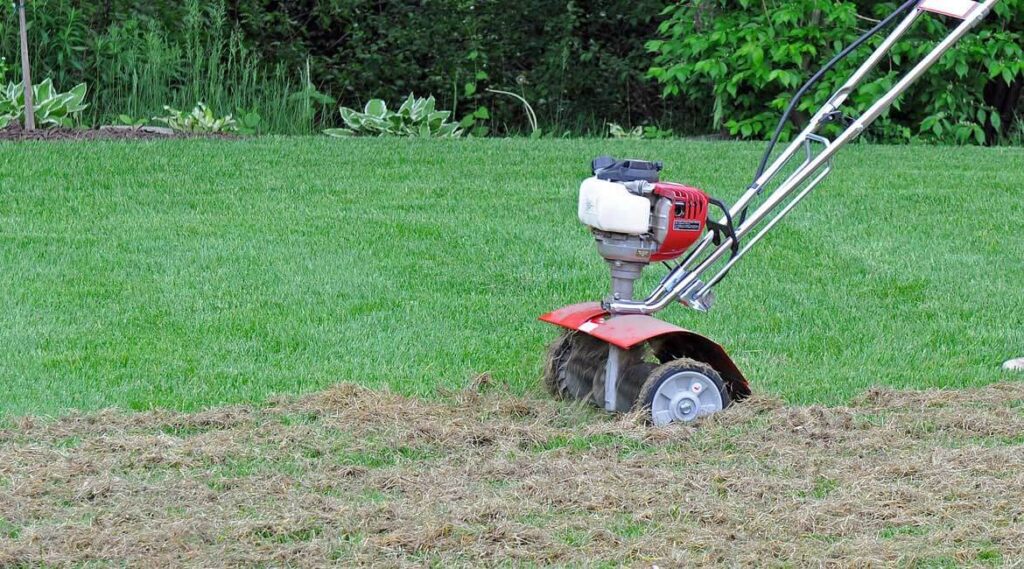In the spring, after a long, cold winter, your lawn will probably need to be vigorized Once your soil is completely dry, you will need to rake your lawn to remove all the residue that has accumulated on the surface over the winter. At this time, also take the opportunity to check the amount of thatch on your lawn.
Thatch, also known as lawn felt, is composed mainly of organic matter and decaying roots at the base of your lawn. With excessive accumulation, you will need to vigorously rake the soil with a dethatching rake to remove the excess thatch. The ideal thickness of thatch is between 1 and 2 cm. At this thickness, it acts more like a cushion for your lawn that forgives trampling, protects the roots and retains water and nutrients. Above 2.5 cm, thatch would have the opposite effect:
- Prevent water, air and nutrients from entering the soil
- Cause surface rooting
- Increase the risk of disease and insect infestation
- Dry out your lawn
Watch the video below to discover all the benefits of coring and topdressing services offered by our Nutrite Experts. Developing a tight knit collaboration with the members of the Nutrite team maximizes your investment. Let us become your ally for a healthy and durable lawn.




